The weather did not look terribly promising. In fact, at 11am, three hours before class time, the rain was lashing down. We’ve in a fairly serious drought here in Southern Maine. No significant rainfall for a couple of months. We really need precipitation and lots of it, but the idea of doing archaeology in a downpour was unappealing. You’ve got to spend a lot of time on your stomach, after all. The weather app suggested that it might brighten up around 2pm. Class time.
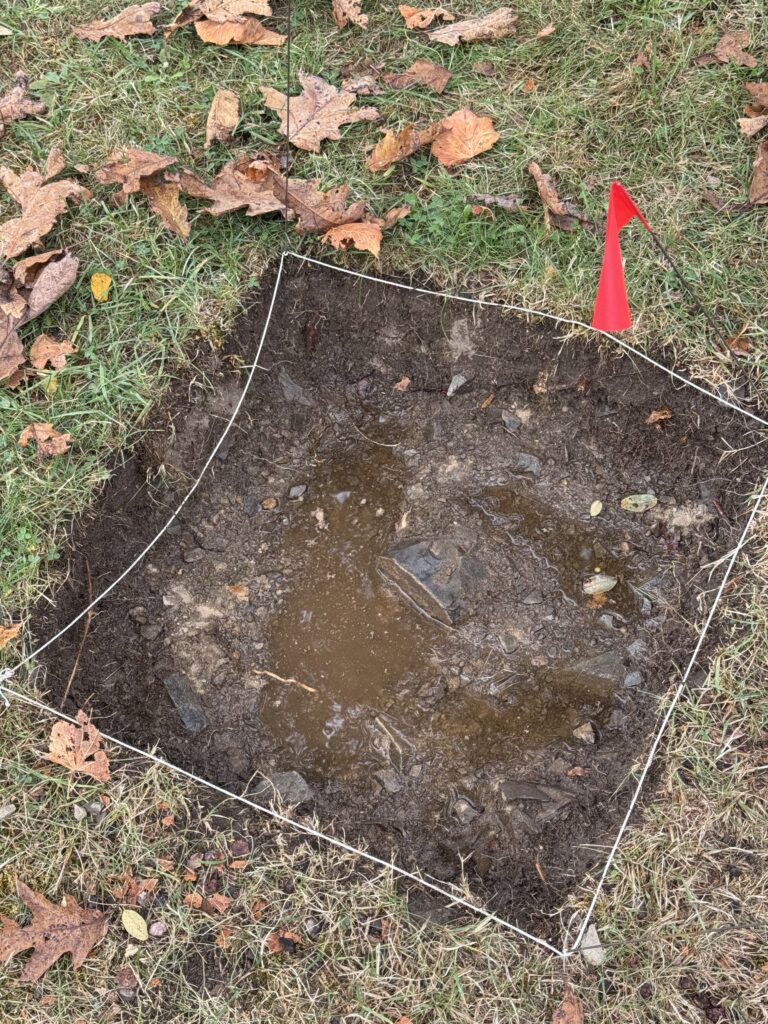
Sure enough, the rain stopped just after 1pm. When we all arrived at the dig site, it was grey but dry. Within half an hour, the sun was coming out. Even the weather wanted to know where the edge of our building is located.
Our first task was to document the three test pits dug last week. Arthur walked the students through the process. He showed them how to draw the stratigraphy, how to use a soil guide to determine the precise colors of each level.
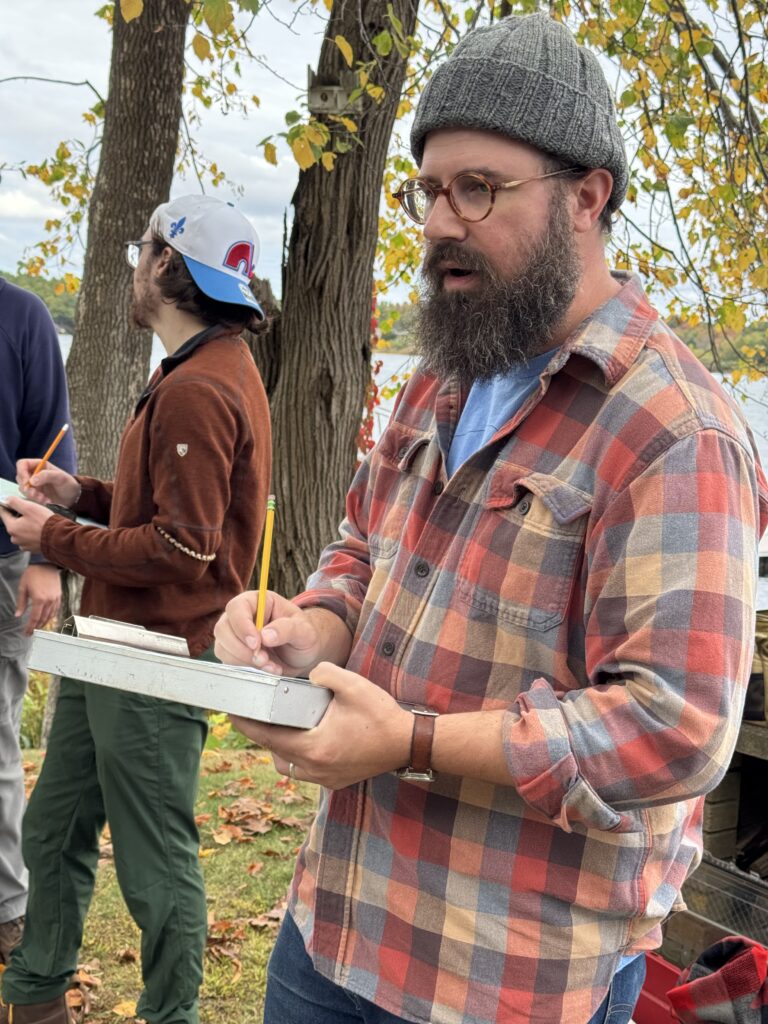
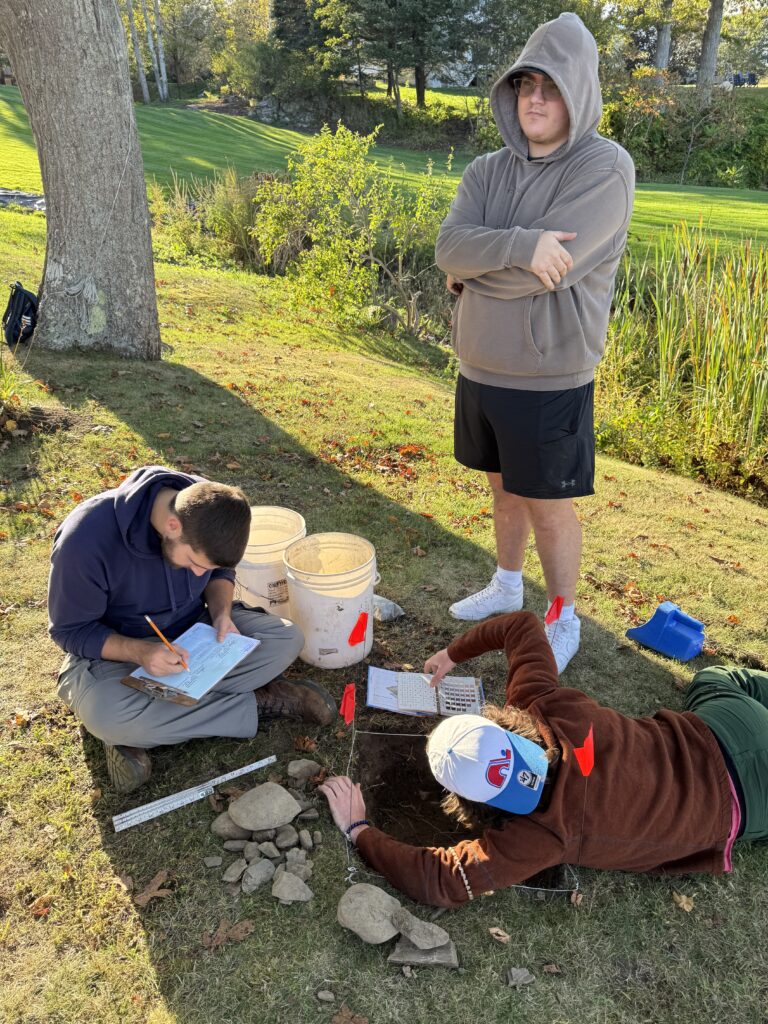
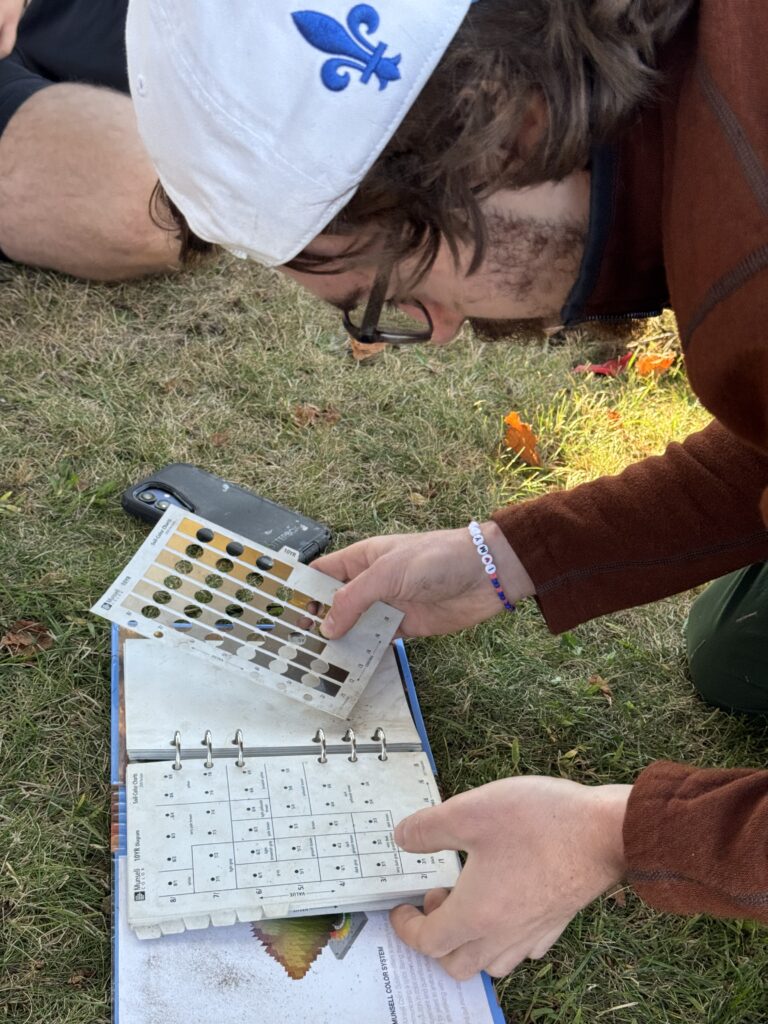
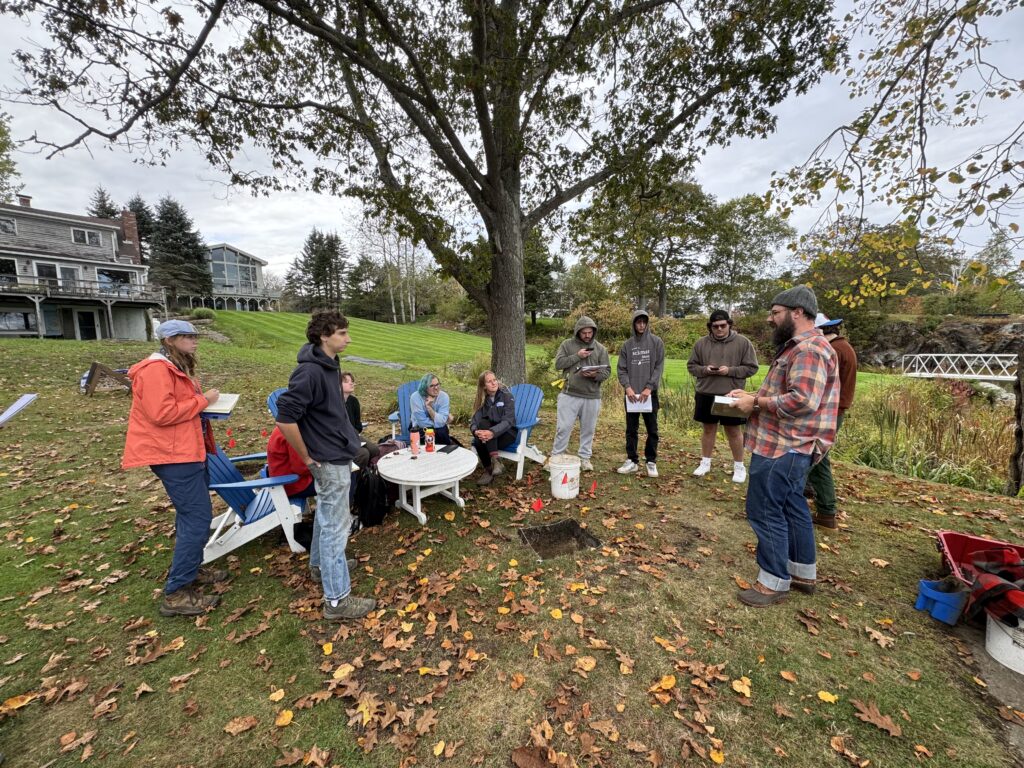
This done, we decided on two final test pits. The first was planned from the start and we hoped it would reveal the southeastern foundation. The second would ideally show us the opposite wall. Knowing these dimensions would give us a sense of scale that might help us better understand the two historic photographs that we have. Indeed, we could combine them with what we knew from test pits 2 and 3—not walls, but at least places close, yet clearly outsidem the structure.
Before describing what we found, the first thing that we noticed is that the drenching rain that fell earlier hardly penetrated the surface. It was still bone dry under the sod. Evidently it takes a lot of rain to overcome a dry spell like we’ve had. Scary.
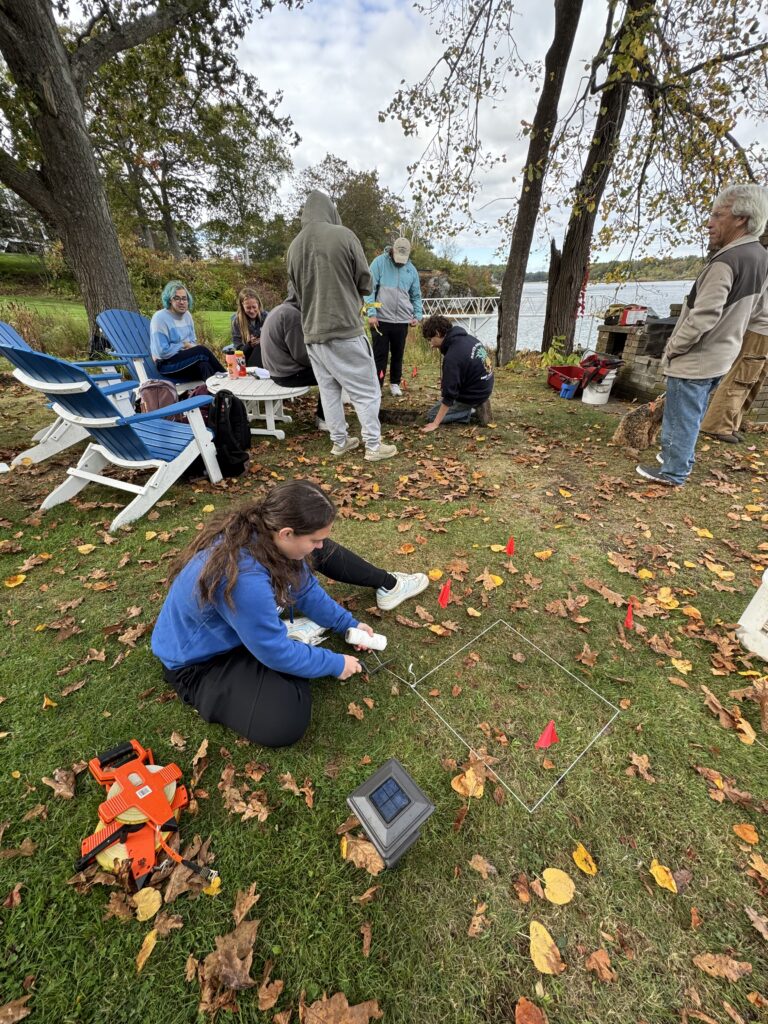
Test pit #4 didn’t end up revealing very much. A bit of glass, little more. While we’d hoped for a wall, this is valuable information. Test pit #1 was inside the building and it was just three or four feet away. We were clearly outside the building, so the wall was somewhere in between.
Test pit #5 turned out to be a gold mine, however. We dig it fast but carefully, like old pros. Upon reaching level three, we turned up more compacted clay. The same sort of stuff we found in the middle of the building. It ended only a few inches northwest where we found the densest collection of nails located anywhere on the site—the sort of configuration you’d find in your own yard after having your roof replaced. They just sort of wash down, forming something of a line along the wall. The edge of the building ran straight through the middle of the test pit! We’d found exactly what we were looking for with 20 minutes left in the archaeological portion of our class.
The pit suggested something else as well. There wasn’t any foundation. There were no rocks, no concrete, not even a line of soil that might hint at no longer extant wooden beams. While I don’t think we imagined there would be anything very dramatic—there was never going to be a basement!—the notion that this thing was just sitting on the ground, perhaps on some blocks, is a little surprising. That it had a dirt floor is also a bit of a shock.
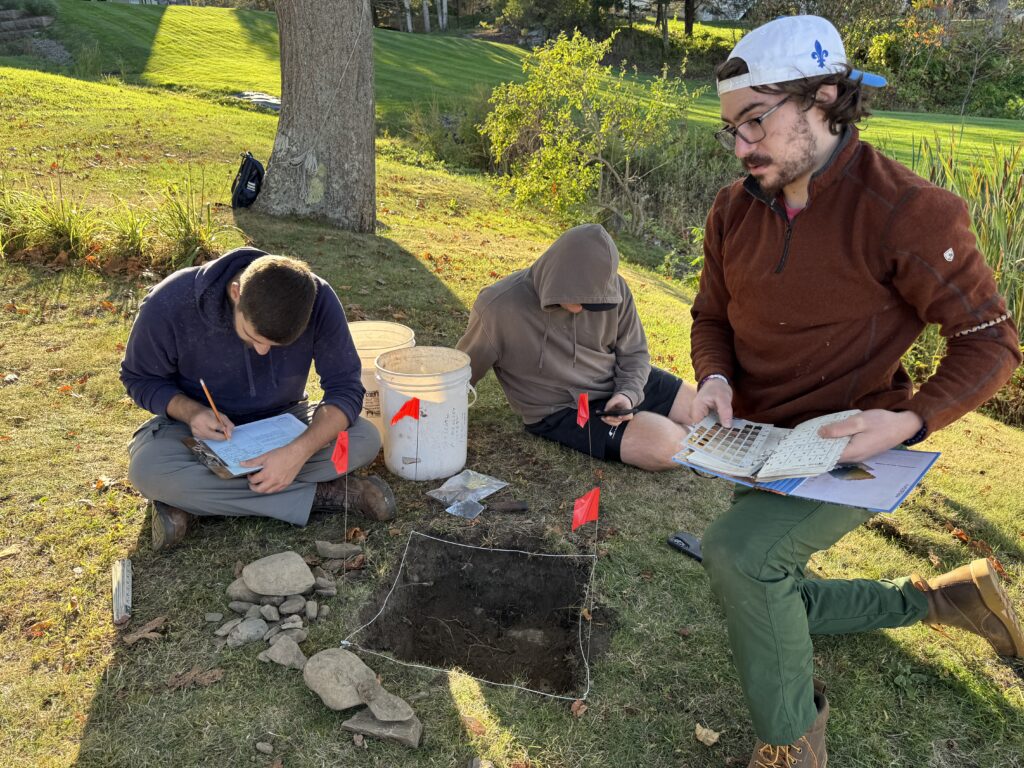
Connor Boisvert, Maxwell Cajdric, and Camden Chierichella finish up test pit #5. The edge of the building runs right through the middle. (Photo by Eric G. E. Zuelow)
We now need to assess what we’ve found, look over the artifacts and discuss the experience. Then, we plunge into the Maine Historical Society Archives (followed by the McArthur Library in Biddeford) in two weeks, looking to see what more we can learn about our farmer/fishermen and the river they depended on.
I’ll post again when there is news to share!
- Eric G. E. Zuelow
